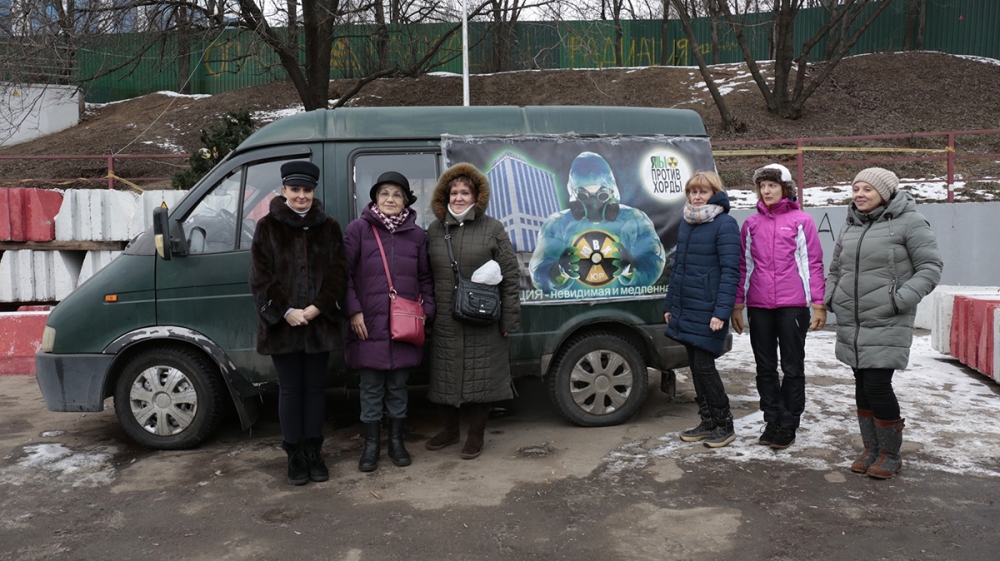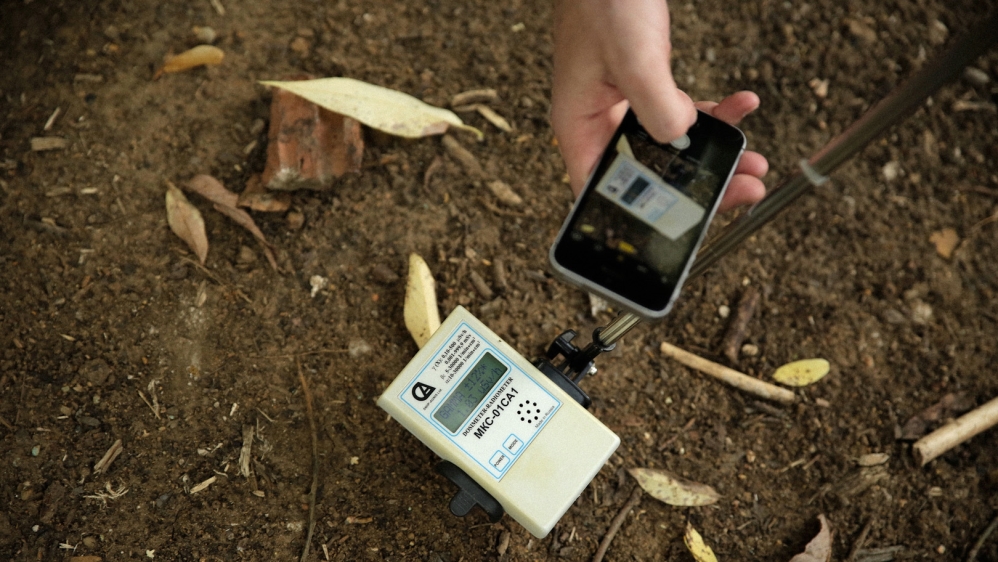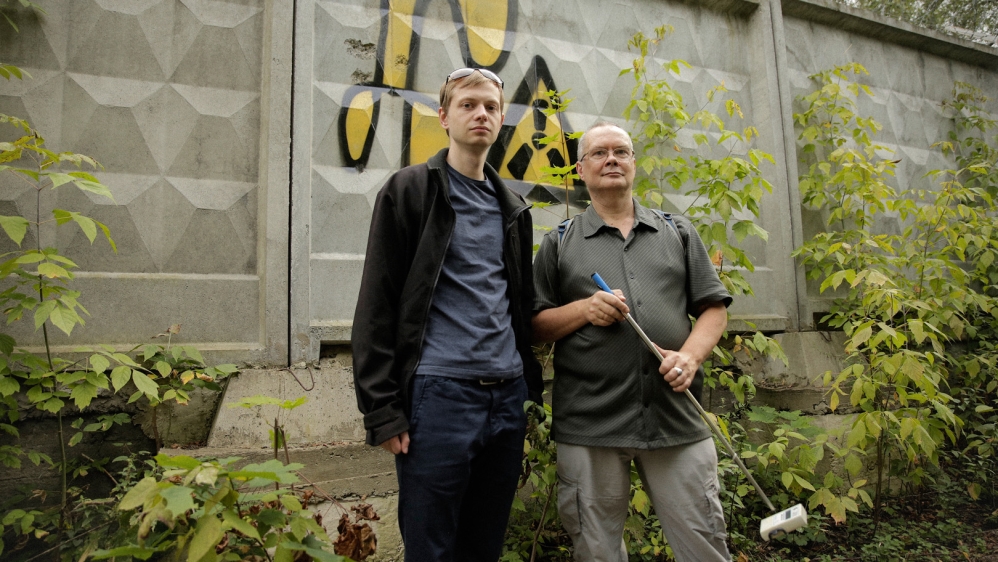Plans for road near radioactive site lead to fury in Moscow
Residents and experts say ‘Southeast chord’ project to ease traffic ignores grave concerns over environmental hazards.

Moscow, Russia – As soon as they heard about the plans for a new road in south Moscow, a small group of residents and scientists tried to oppose them, organising in relative obscurity.
The project had been launched in late 2018 by Moscow’s transports and construction departments, and there was little information to the public except that the aim was to build a portion of a new expressway in a populous area of the Moskvorechye district.
Keep reading
list of 4 itemsRainfall set to help crews battling wildfire near Canada’s Fort McMurray
The Alabama town living and dying in the shadow of chemical plants
How India is racing against time to save the endangered red panda
But there was one serious problem. The planned road was to pass only 50 metres (164 feet) away from some 60,000 tonnes of radioactive waste, buried in a wooded hill.
Concerns inevitably arose among the few people who discovered more about the plan. Some even dubbed it “Moscow’s Chernobyl”, after the smash TV series.
Through whistle-blowing, they managed to raise awareness and, after a year of silence, authorities started to pay attention.
“We still hope to get construction in that area cancelled, that’s our ultimate goal,” Sergey Vlasov, a representative of the neighbouring Pechatny district council, told Al Jazeera.

The multi-lane road would cut through Vlasov’s district and 10 others.
The 30km (19-mile) “Southeast chord” is part of a plan for new ring roads around Moscow, designed to ease up the capital’s notorious traffic by connecting large avenues that go from the city centre to the outskirts.
Authorities appeared to not consider the toxic obstacle, later arguing that 50 meters was a big enough distance for it to be safe.
With high rises and Soviet-style housing projects, the affected area is home to tens of thousands of people and close to the Kolomenskoye Park, a former royal estate and popular attraction.
“I’m afraid of the situation, I’m scared for our health”, said pensioner Lydia Victorovna, a local resident.
To add to the environmental hazard, the hill containing radioactive waste also borders Moscow’s landmark river, the Moskva.
The waste is courtesy of the adjacent Polymetals plant, which was in the 1940s and 50s running tests with thorium and uranium. It has been buried and left there ever since, unattended and essentially forgotten.
“This amount of nuclear waste buried in inner Moscow without anyone caring is already a big problem in itself,” said physicist Andrey Ozharovsky.
An atom specialist and former researcher at Moscow’s top nuclear Kurchatov Institute, Ozharovsky embraced the cause early, tipped off by a resident.
Along with Vlasov, Greenpeace and a number of locals, he started taking tours, Geiger counter in hand, showing visitors the levels of radiation in the forest.
“The counter I have here is very basic and yet, it reads soil radiation levels (10 microsieverts per hour) already 12 times higher than normal. More sensitive counters have read up to 60 microsieverts per hour in some holes.”

He said ground work, carving up an unstable hill, could expose waste and free up radioactive particles – or even cause a landslide towards the Moskva River downhill.
“You wouldn’t want excavators here,” warned Ozharovsky. “That’s the main thing. We don’t want toxic dust up in air and into people’s lungs.”
But opinions vary on the degree of potential peril.
Official bodies such as the Ministry of Emergency Situations and specialists from Moscow State University concluded the hill was toxic while not immediately dangerous.
TekhnoTerra, an independent firm commissioned by Greenpeace to analyse ore samples, certified radiation levels five times higher than the radioactive waste threshold.
But TekhnoTerra’s head, Vladimir Reshetov, also told Al Jazeera that “right now, the danger for people is very low and would remain low even in the case of construction work … if the authorities take the right precautionary measures.”
“It’s like keeping a can of mercury in your basement: it’s safe until it’s not any more.”
Even if the potential threat is difficult to establish, the decision to build a major road there is puzzling to some.
Locals believe the situation illustrates a lack of consideration from Russia’s ruling class in general.
“Nobody cares about us,” said Ekaterina Afonkina, who lives a few blocks from Moskvorechye railway station. “We tried in all of 2019 to open a dialogue with governing bodies.”
Vlasov added: “They basically decided to greenlight first, and tell the public second.
“The people high up don’t care about this land or ecology. They live outside of Moscow anyway.”

In a written reply to Al Jazeera’s request for comment, Moscow city’s construction department said that they “conducted an in-depth environmental survey and did not find traces of pollution in the soil where the road is to be built”.
But no such information was made available to the public and people were not consulted beforehand.
The protest comes against the backdrop of a growing number movements across Russia over environmental or urban planning issues.
Konstantin Fomin, an energy specialist at Greenpeace Russia, said the city’s leaders are taking the wrong approach.
“We need to develop public transportation, car-sharing, green mobility, not yet another large highway.”
Residents tried to raise awareness by organising a grassroots campaign through social media.
After an initial meeting of about 100 people, Russian media started reporting on the story, which is critical for a movement to gather pace in the country.
On February 8, the biggest rally to date took place at the foot of a neighbourhood housing block, with hundreds in attendance.
Last week, the Moskvorechye activists also took part in a large Eco Protest march in Moscow, which was well attended despite fears around the coronavirus.
Local activists set up a permanent “headquarters” van on a small square close to the woods, where people share ideas, drink tea and organise. A large radiation counter is running around the clock.
Their efforts finally paid off.
Moscow’s powerful mayor and builder in chief, Sergey Sobyanin himself, stepped in. He explained on his website the necessity for the new road, while publicly acknowledging for the first time the very existence of the radioactive materials.
He now promises to clean up the hill and get rid of the waste before resuming construction, “no matter the costs”.
Ozharovsky described Sobyanin’s words as a good first step, but not a victory.
Vlasov said: “We also have a tough time believing them. “They’re pledging to spend 80 million rubles ($1.1m) for this, a lot less than what would be needed.”
Looking ahead, the activists say they will keep mobilising until the site is thoroughly investigated and cleared of all radioactive waste, or until the construction is re-routed somewhere else.